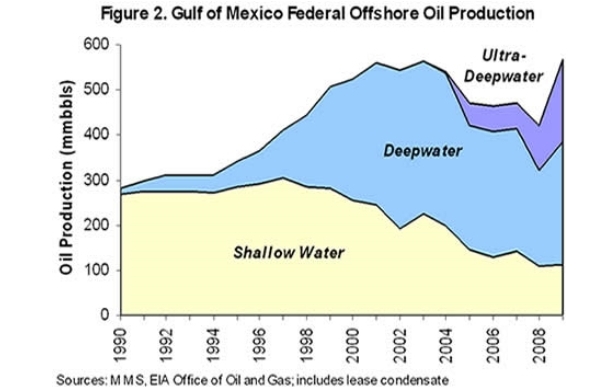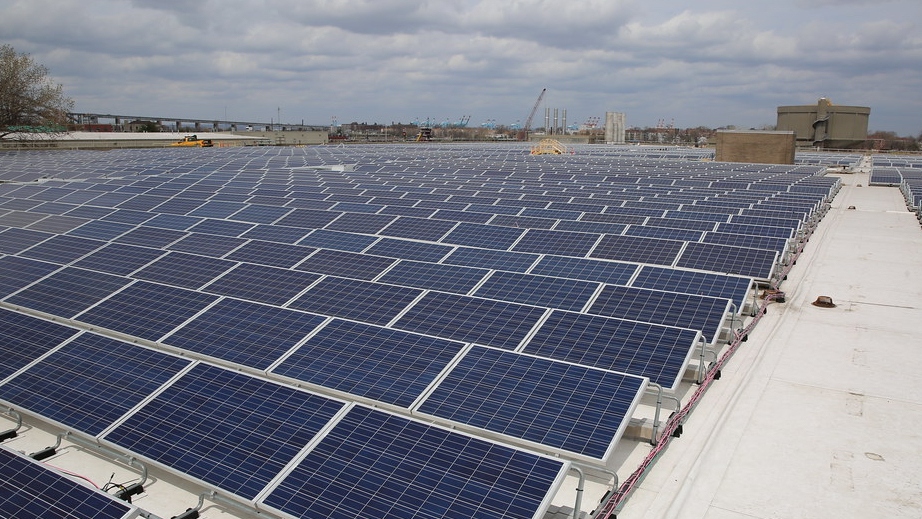There are vigorous debates about when we reached, or will soon reach, peak oil, the stage at which we’ve used more of the planet’s oil than we have left in supply. But it’s plenty clear that we’re deep into the age of tough oil, in which the most easily accessible oil has long since been retrieved and burned.
Remaining reserves are increasingly difficult to reach and extract. This graphic shows how we’ve been forced to drill deeper and deeper in the Gulf of Mexico:

Daniel Gross at Slate offers a good overview of the era of “extreme energy” — same idea as tough oil, but applies to coal and natural gas too:
The Gulf of Mexico isn’t the only place where such so-called tough oil is to be found in North America. The environmental hazards of drilling in the Arctic National Wildlife Refuge are so obvious that even the Bush-era Congress and White House wouldn’t go there. Analysts have enthused about the rapid development of the Alberta tar sands in Canada — friendly, nearby, democratic, non-terrorist-promoting Canada. An Alberta government Web site notes that the oil sands are “the second largest source of oil in the world after Saudi Arabia.” The reserves there — 171.8 billion barrels — amount to 13 percent of the global total and are about what Iraq and Russia combined have. But the gunk in the tar sands isn’t really oil. It’s bitumen. And it has to be ripped out of the earth, or pushed to the surface in a process that itself consumes a lot of water and natural gas. Producing a barrel of oil from tar sands creates more than twice as many emissions than old-school oil drilling.
Natural gas is supposed to be an easy form of energy — it burns more cleanly than petroleum, and the United States has vast supplies. In recent years, discoveries of reserves locked in shale rock in Texas (the Barnett Shale) and in the Appalachians (the Marcellus Shale) have spurred a boom. But shale gas is also tough energy. The gas is produced via fracking — fracturing the rock with water and chemical solvents to loosen up the gas molecules. The environmental risk? The water mixed with solvents could filter into underground aquifers. Inconveniently, the Marcellus Shale overlaps with the watershed of the New York City region. And then there’s the matter of earthquakes. Last year, experts in Texas grew concerned when rare seismic activity was detected in areas where natural-gas drillers had been fracking.
Chasing extreme energy increases the risk of disasters such as the Gulf of Mexico leak and requires energy-industry workers to take on ever more dangerous jobs. And even when things go according to plan, fracking and mining for coal and mining the tar sands make larger environmental messes than mines of the bygone “easy energy” era.


